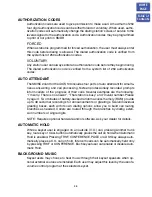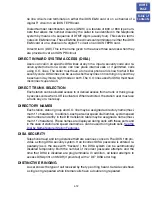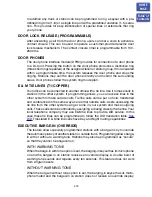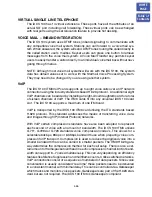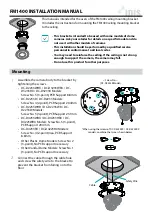
CUSTOMER SET RELOCATION
Customer Set Relocation allows the customer to exchange or swap similar stations
in the iDCS 100 without wiring changes. All individual station assignments such as
trunk ring, station group, station COS, station speed dial, button appearances, call
forwarding, etc. will follow the Customer Set Relocation program.
DATA SECURITY
Single line extensions used with modems and facsimile machines can be pro-
grammed so that they will not receive any system-generated tones that would dis-
rupt data transmissions. In addition, these devices receive iDCS C.O. ringing pat-
tern instead of intercom ring pattern. Devices connected to an SLI card receive a
disconnect signal upon termination.
DATABASE PRINTOUT
A copy of the customer database can be obtained by using PCMMC. This informa-
tion can be directed to a printer or the PC screen and may be done either on-site or
remotely. A complete database or specific data blocks may be obtained.
DAYLIGHT SAVING TIME-AUTOMATIC
The system has a table that can be programmed with the daylight savings change
dates for up to 10 years. At 2:00 am on these dates the system will automatically
adjust the system clock to match daylight savings time. If no dates are programmed
the clock will not change.
DIALED NUMBER IDENTIFICATION SERVICE (DNIS)
When DNIS service is provided on an incoming E&M trunk the iDCS 100 can route
calls based on the numbers received.
DIRECT IN LINES
Outside lines may be programmed to bypass the operator(s) and ring directly at
any station or group of stations.
DIRECT INWARD DIALING (DID) T1/COPPER
The term Direct Inward Dialing refers to types of digit steered inbound call han-
dling. These are DID, Both Way DID, Dialed Number Identification service (DNIS)
and Direct Dial In (DDI). The iDCS 100 supports the types described below.
DID is an inbound only service where multiple telephone numbers are assigned,
usually in blocks of twenty, to a single circuit or small group of circuits. These cir-
cuits can be single pair analog circuits that will terminate on a DID card. DID cir-
cuits can be channels on a digital T1 service terminating on an iDCS 100 TEPRI
card.
Both way DID is a service that combines DID service with normal outbound local
telephone service. This service is provided over E&M tie line circuits. These E&M
4.11
HOME
PAGE
Table of
Contents







